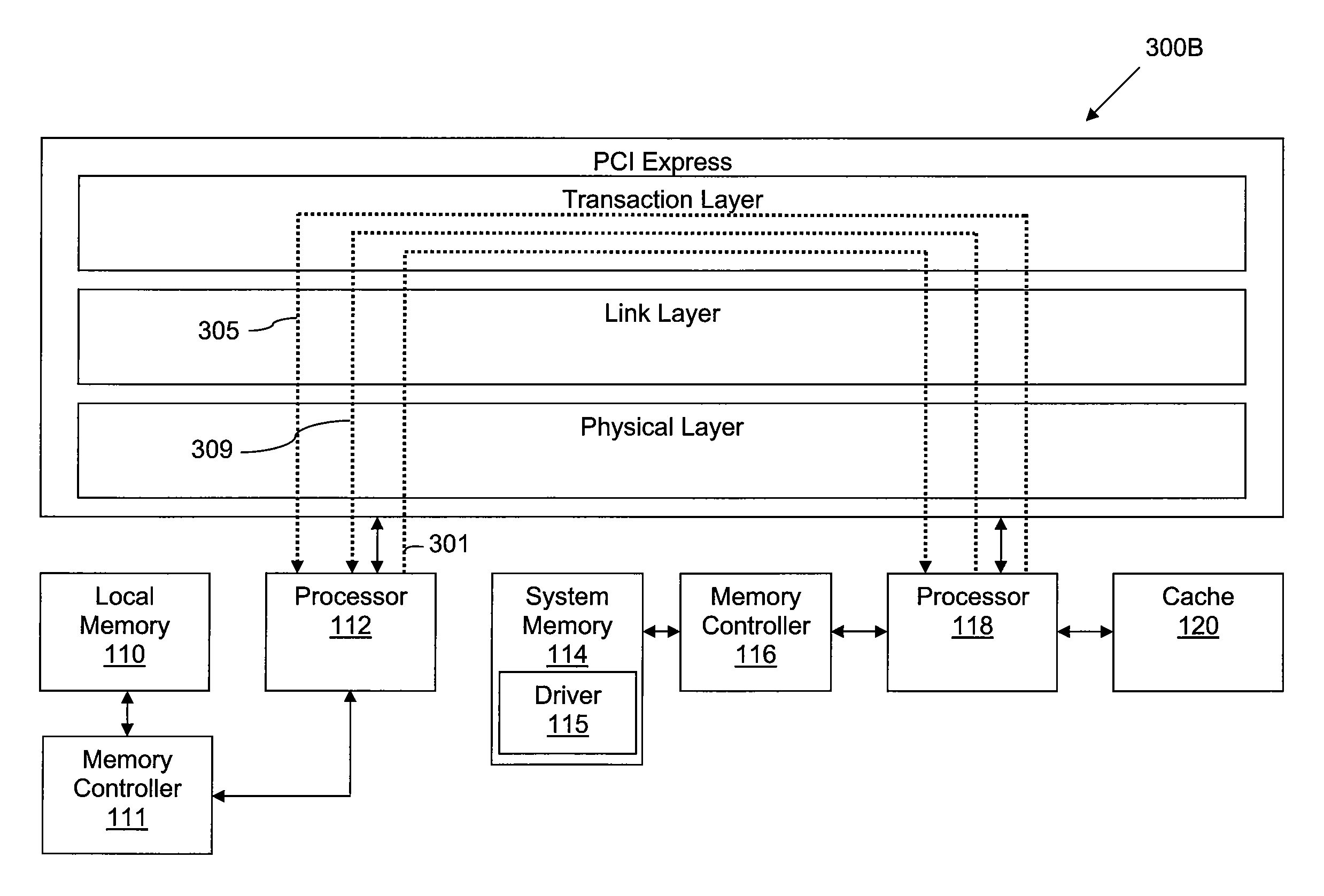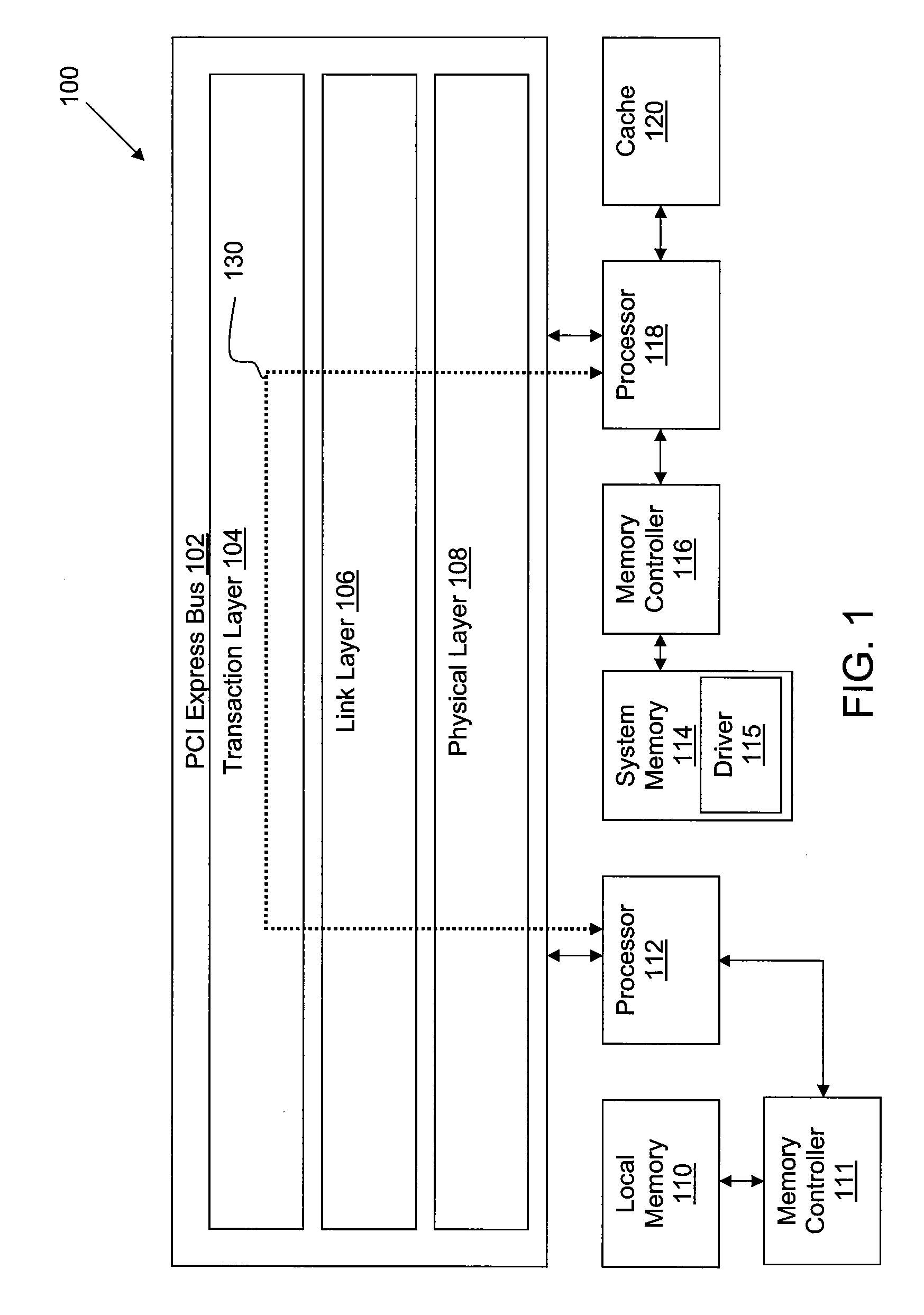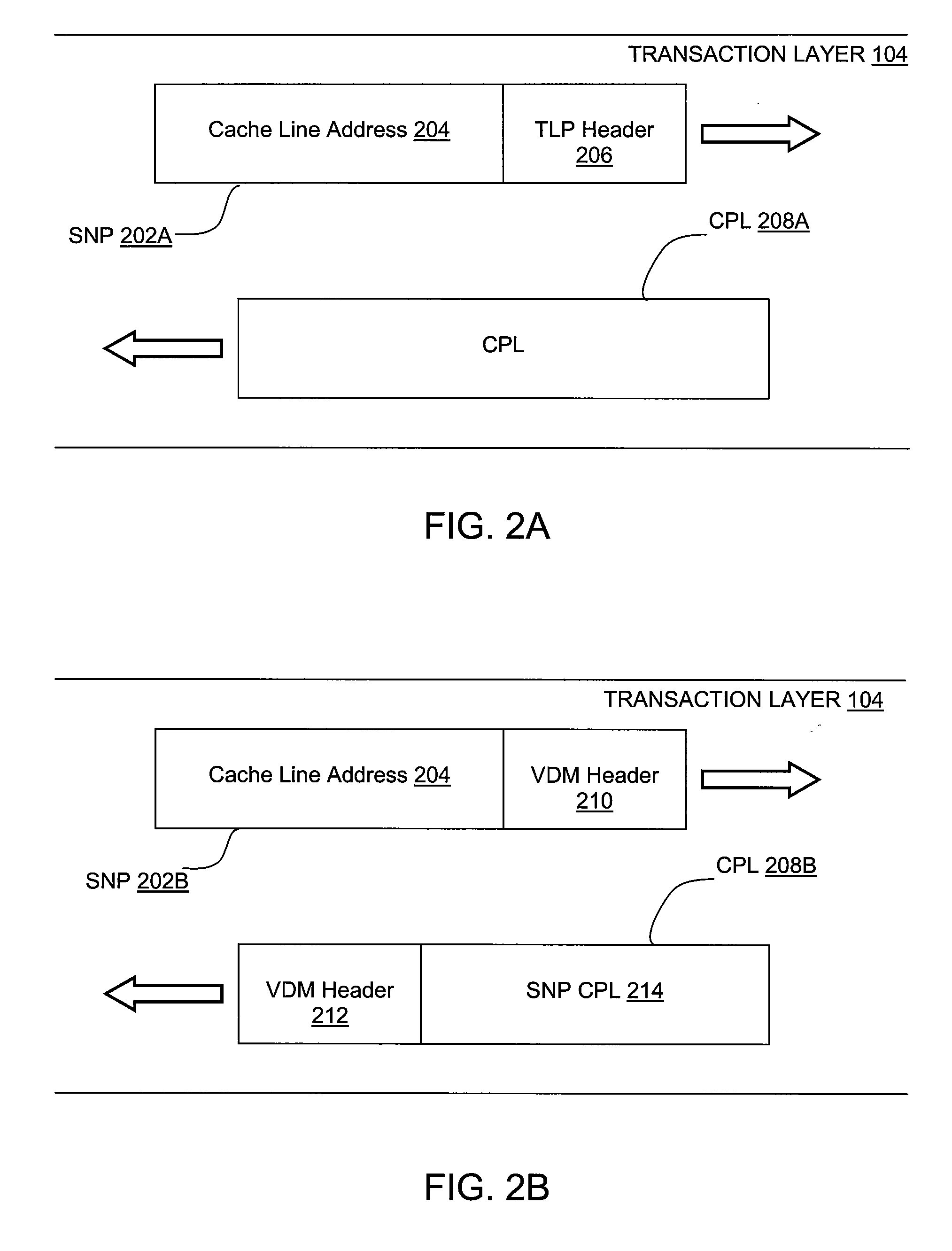System And Method For Maintaining Cache Coherency Across A Serial Interface Bus
a serial interface and cache technology, applied in computing, memory address/allocation/relocation, instruments, etc., can solve the problems of multiple cpus in conventional systems that cannot read and cache data, data cannot be stored in an intervening cache, and may have side effects expected by computing systems and required for normal operations. the effect of processing speed
- Summary
- Abstract
- Description
- Claims
- Application Information
AI Technical Summary
Benefits of technology
Problems solved by technology
Method used
Image
Examples
first embodiment
[0028]FIG. 2A is a conceptual diagram illustrating packets associated with a SNP transaction, according to one embodiment of the invention. As shown, FIG. 2A illustrates a SNP request 202A and a CPL message 208A travelling through the transaction layer 104. In one embodiment, the SNP 202A and the CPL message 208A do not travel through the transaction layer simultaneously, as described in greater detail herein. The SNP request 202A includes a cache line address 204 and a transaction layer packet (TLP) header 206. The cache line address 204 specifies the address of the cache line to be examined. The TLP header 206 identifies the message as a SNP request 202A to the recipient of the message.
[0029]The SNP request 202A may be added to the PCIe standard protocol as a “non-posted transaction.” When a first PCIe endpoint transmits a non-posted transaction to a second PCIe endpoint, the first PCIe endpoint expects a CPL message in response. Thus, when the processor 112 transmits the SNP requ...
second embodiment
[0031]FIG. 2B is a conceptual diagram illustrating packets associated with a SNP transaction, according to one embodiment of the invention. As shown, FIG. 2B illustrates a SNP request 202B and a CPL message 208B travelling through the transaction layer 104. In one embodiment, the SNP request 202B and the CPL message 208B do not travel through the transaction layer 104 simultaneously. SNP request 202B includes a cache line address 204 and a vendor-defined message (VDM) header 210. The CPL message 208B includes a VDM header 210 and a SNP CPL 214. The SNP request 202B and the CPL message 208B are both VDMs and are not included in the PCIe standard protocol. The processor 112 uses the SNP request 202A and the SNP request 208B in a similar fashion to initiate a SNP transaction. The processor 118 uses the CPL 208A message and the CPL 208B message in a similar fashion to indicate that the SNP transaction is complete.
[0032]When the processor 112 transmits the SNP request 202B to the process...
third embodiment
[0059]At step 506, the processor 118 adds a completion status to the CPL message. In one embodiment, the completion status is a read completion notification. In an alternative embodiment, the completion status indicates that no action was taken. In yet a third embodiment, the completion status is blank. At step 608, the processor 118 adds destination information to the packet. The destination information identifies the processor 112 as the intended recipient of the CPL message. The PCIe bus includes logic that routes the CPL message to the processor 112 according to the destination information. When the processor 112 receives the CPL message, the SNP transaction is complete, and the local memory 110 is coherent with the cache 120.
[0060]In sum, embodiments of the invention provide a technique to perform a “snoop” (SNP) transaction on the PCIe bus. A SNP transaction is implemented using a SNP request and a “complete” CPL message. When a first processor stores data in a local memory un...
PUM
 Login to View More
Login to View More Abstract
Description
Claims
Application Information
 Login to View More
Login to View More - R&D
- Intellectual Property
- Life Sciences
- Materials
- Tech Scout
- Unparalleled Data Quality
- Higher Quality Content
- 60% Fewer Hallucinations
Browse by: Latest US Patents, China's latest patents, Technical Efficacy Thesaurus, Application Domain, Technology Topic, Popular Technical Reports.
© 2025 PatSnap. All rights reserved.Legal|Privacy policy|Modern Slavery Act Transparency Statement|Sitemap|About US| Contact US: help@patsnap.com



